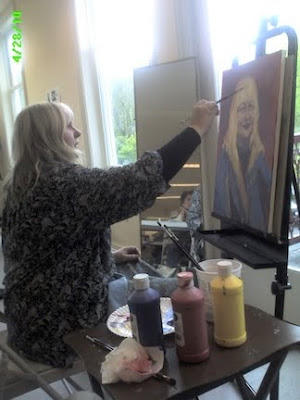
Karen Lynn Ingalls painting self portrait
The class asked for a self portrait painting demonstration on Wednesday. Here's a photo Michael took of the process (thank you, Michael!). When we talked about why people generally look so stern in their self portraits — they're concentrating — I said I would do this of me smiling. It's tough to concentrate, smile, and talk about the painting process — all while painting!
In addition to the challenges presented by the process of painting portraits, we talked about the question of whether people wanted to memorialize their aging processes. As my friend and acupuncturist Rebecca Weinfeld says, we all have the vanity gene.
But painting is not photography. Painting does not require the documentation of every detail of every last wrinkle, unless you really want to paint in a documentary, photorealist method. It's your painting, you make the rules. Look at shapes and values and colors – don't get sidetracked by the details. As always, use what you see as a springboard to greater creativity.
(Or — if you want to approach it this way — as Trish said, painting is better than botox.)









